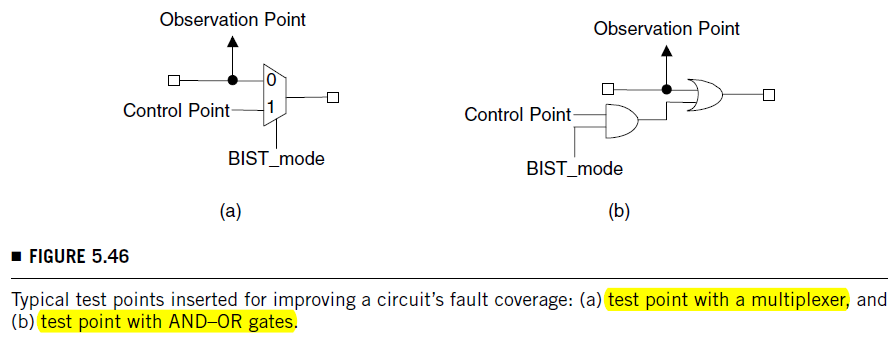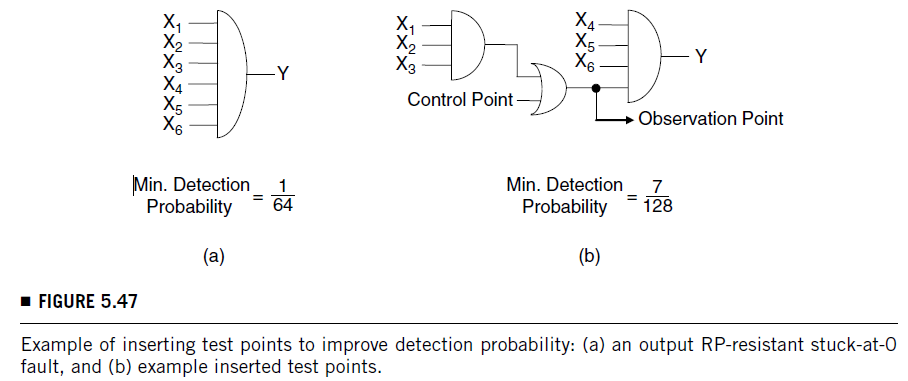在pseudo-random test中,由于random pattern resistant的特性,fault coverage不是sufficient的,
所以会有一些办法来进行coverage的提高:
1)test point insertion;
2)mixed-mode BIST;
3)hybrid BIST;
前两种是in-field coverage enhancement,后一种是manufacturing coverage enhancement
Test point inserting通过增加control/observe point来提高coverage,防止RP-resistant
Mixed-mode BIST通过在pseudo-random pattern中加入一些deterministic pattern来提高coverage
hybrid BIST是在tester上通过BIST和external testing的混合方式,通过deterministic data和pseudo-random
pattern的使用,来提高coverage。
Test Point Insertion
control point一般连接到primary input或scan cell output上
observation point一般连接到primary output或scan cell input上
Test point可以使用multiplexer或者AND_OR门电路搭建:

通过test point的插入不仅可以测试到没有cover的点,还能提高某个fault被测出来的概率:

Test Point Placement
由于test point的area和performance的消耗,test point的位置一般放在能够最大化coverage,最小化test point数量的地方.
目前有三种方式来进行处理:
1)Fault simulation,这种方法要求知道TPG,从而可以定位到很难cover到的fault的点,然后通过一个covering algorithm来选择
最好的点,放最少的test point来实现最高的coverage
2)Testability measure,通过提高detection probability,叫做controllability/observability program testability measure
迭代的增加test point来使得testability得到满足。防止RP-Reasistant。这种方式可以通过probabilistic fault simulation来在RTL阶段
就进行test point的插入,optimizing the design.
3)由于test point对timing的影响,还有一种是Timing-driven test point.
Mixed-Mode BIST
Test point insertion的另一个缺点是必须modifying the circuit under test.
Mixed-mode BIST,通过pseudo-random pattern来detect RP-testable faults,另一些deterministic patterns来detect RP-resistant faults.
三种设计方法:
1) ROM Compression,最简单的方法,在ROM中保存deterministic patterns
2) LFSR Reseeding,直接保存LFSR seeds来产生test patterns.
3) Embedding Deterministic Patterns,将pseudo-random patterns中并不会detect new faults的pattern通过mapping logic转换为
Deterministic pattern
Hybrid BIST
在manufacturing fault coverage enbancement技术中,deterministic pattern从tester输入,并且tester中的pattern可能是被compressed